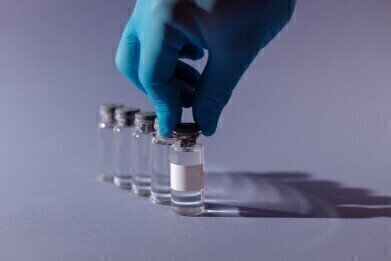News & Views
What is High-Throughput Screening?
Aug 18 2014
High-Throughput Screening (HTS) is an automated process that can rapidly identify active compounds, antibodies or genes, and the results provide starting points for drug design and an understanding of the interaction or role of identified biochemical processes in biology. HTS facilitates the analysis of thousands of potentially useful compounds in a relatively short time frame. The technique is used in the early stages of the drug discovery pathway and in toxicology studies of new chemicals or in environmental analysis.
Samples known as targets, such as enzymes, cells or RNA, can be tested simultaneously with a reagent to see the effect on the target. This is carried out by placing the target chemical into wells on a well-plate, each of which may contain over one thousand sample wells. Different reagents can be added to each of the target wells simultaneously and a reaction carried out. The analysis can be repeated any number of times to replicate results, use different experimental test conditions or to vary the test components.
An analysis is then carried out to determine which reagents reacted with the target molecules. The reactions giving a positive result are known as hits. These are the reactions of interest; if the search is for a new drug, when a hit is identified it can be taken forward to the next stage of screening.
Up to several thousand targets can assayed in each experiment, generating large amounts of data. Without modern robotics and computing power, HTS could not exist in the form used today.
Elements of HTS
There are four elements necessary for running a successful HTS analysis:
- Chemical or compound library. This comprises the ‘database’ of samples that are reacted with the target molecule. The database is generated in-house or purchased from a library. Typical libraries might include a range of proteins or genes.
- Suitable assay method. The method must be easy to replicate and suitable for automation. Reagents and reaction conditions should be stable as the screening process can run without operator supervision.
- Robotic system. The robotics system carries out all of the automated processes. It adds the target compound to the wells, prepares the plates, adds the reagents, sets the reaction conditions and then prepares the samples for measurement.
- Data analysis system. The data analysis system takes all the results generated from the assays and screens them for positive hits.
Robotic Functions in HTS
One of the advantages of using robotics in HTS is that a robot can carry out repetitive actions over a long period of time without any deterioration. This is critical for HTS due to the number of assays and the degree of reproducibility required. Over a 100,000 assays per day are not uncommon. HTS uses very small sample sizes, typically of the order of micro-litres, in each well. Using very small volumes is cost effective but requires high precision to produce repeatable experimental results.
Liquid in HTS is usually handled using robotic-controlled pipettes. The advances in pipette technology benefitting HTS are discussed in the article: 96- and 384-Channel Electronic Pipettes - An Affordable Way to Increase Pipetting Productivity.
Digital Edition
Lab Asia 31.2 April 2024
April 2024
In This Edition Chromatography Articles - Approaches to troubleshooting an SPE method for the analysis of oligonucleotides (pt i) - High-precision liquid flow processes demand full fluidic c...
View all digital editions
Events
Apr 22 2024 Marrakech, Morroco
Making Pharmaceuticals Exhibition & Conference
Apr 23 2024 Coventry, UK
Apr 23 2024 Kintex, South Korea
Apr 23 2024 Seoul, South Korea
Apr 24 2024 Jakarta, Indonesia








.jpg)









